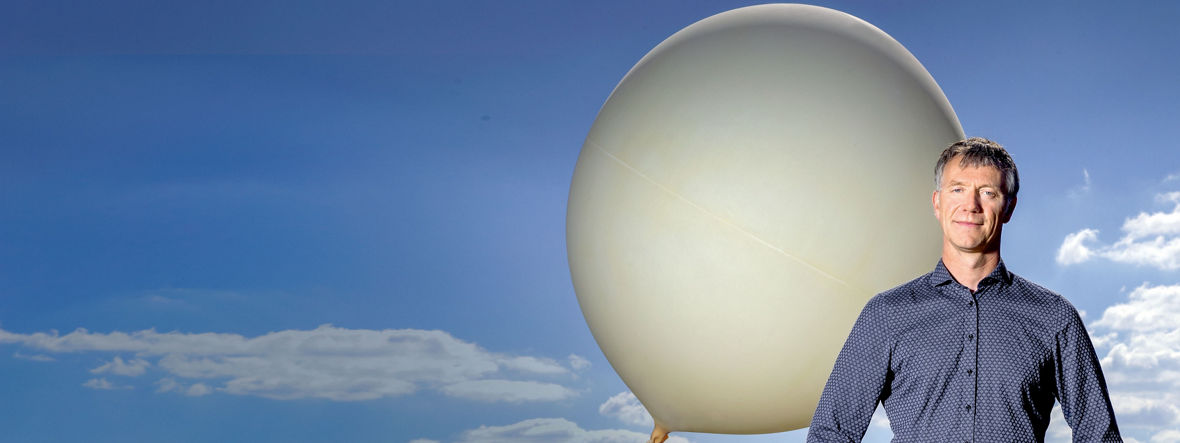In my Element - Helium
After hydrogen, helium is the lightest gas in the universe. We take advantage of this property at the DWD—Germany’s National Meteorological Service. Helium is our “draft animal” that carries weather balloons with measuring instruments known as radiosondes into the sky. Helium is a remarkable element. It is a noble gas that is extremely rare on earth. In outer space, however, it is the second most common element. Whereas the helium in the universe was created at the Big Bang, on earth it is a consequence of the aging of our planet. It is formed during the radioactive decay of elements such as uranium.
Radiosondes are launched twice a day at 14 measuring stations of the German Weather Service; here in Lindenberg near Berlin even four times. They climb at a speed of five meters per second and transmit information on air temperature, humidity, and pressure as well as wind strength and direction every one to two seconds. We can also determine how clouds form or Saharan dust disperses.
At launch, the weather balloon has a diameter of 1.5 meters. At an altitude of just over 35 kilometers, the balloon has expanded to about twelve meters due to the decreasing atmospheric pressure—and it bursts. The radiosonde floats back down to earth on a parachute. Admittedly, when I started working at the DWD, I found it hard to imagine that such a small instrument could do so much. I previously worked on satellite projects in the Netherlands. I’m now fascinated by working with radiosondes. The data is very valuable. It saves lives because we can use the data to predict hurricanes and other severe weather. But the data also tells me whether I should rather cycle to work or drive.


